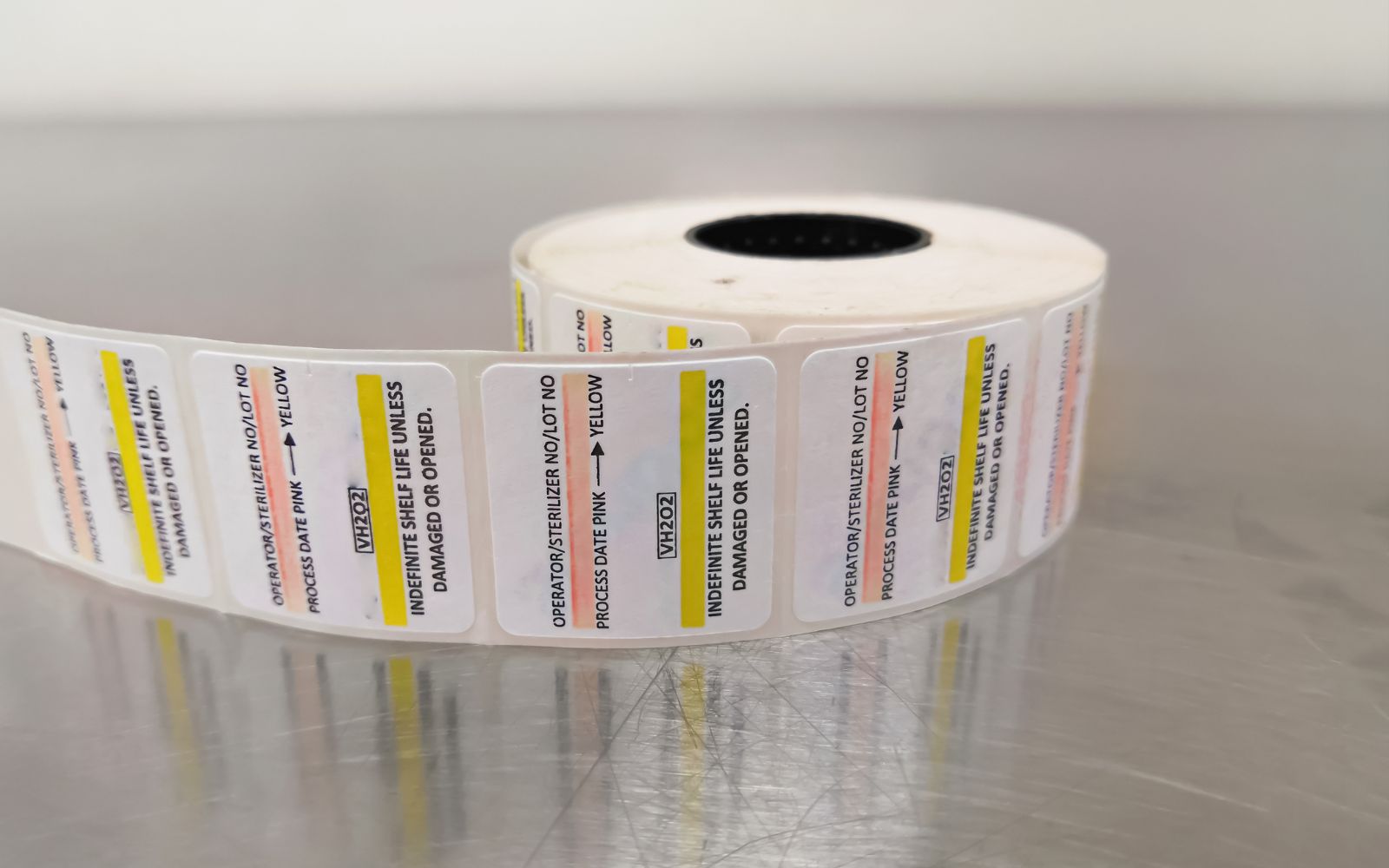- Ethylene oxide is one of the most common chemicals produced and used in the U.S.A.
- The growing realization of the extent of its chronic health effects on workers and neighboring communities has led to numerous recent regulations aimed at reducing its levels in the atmosphere.
- The new Interim Registration Review Decision for ethylene oxide (EtO) focuses on sterilization centers, as their workers suffer high exposure and are at significant risk of cancer.
The U.S. Environmental Protection Agency (EPA) has announced an “Interim Decision for Ethylene Oxide” to reduce the risk for people working in industrial facilities using it and for neighboring populations. In this article, you will find out why the new law was necessary and the reason for the focus on sterilization centers.
Ethylene Oxide Production and Use
Ethylene oxide (EtO) is one of the 25 most abundant chemicals produced in the U.S.A. The market for ethylene oxide is expanding. The growth rate from 2023 to 2030 is expected to be a compound annual growth rate (CAGR) of 3.7%.
Around 97% of the ethylene oxide produced in the U.S.A. is used to make other industrial chemicals. Around 60% of the total EtO is used to manufacture ethylene glycol, a key ingredient for several daily-use articles and an antifreeze agent.
The remaining 3% is used alone or in combination with other gases, such as carbon dioxide, nitrogen, and dichlorofluoromethane, as a sterilant, fumigant, disinfectant, or insecticide. Approximately 95% of non-production EtO use is for sterilization, and the remainder is used as a fumigant, disinfectant, or insecticide. Although only a small portion of the EtO gas is used for sterilization and fumigation, several industries utilize it for this purpose.
- Approximately 95% of non-production EtO use for sterilization occurs in medical and dental clinics, hospital equipment, and research laboratories. Several medical equipment and tools made of heat-sensitive materials use EtO sterilization. Nearly 50% of all medical tools are now sterilized by EtO.
- Less than 1% of the total EtO production is used for fumigation purposes, including food, cosmetics, furniture, books, paper, furs, clothing, leather, drugs, railroad cars, tobacco, and beehive equipment.
Facilities that produce or use ethylene oxide release it into the air and water. Air movement is the primary method of polluting the atmosphere, as exposure through water doesn’t occur. Since soil doesn’t absorb EtO, exposure is also not possible through soil contact.
Ethylene Oxide Properties
EtO is both toxic and a safety hazard. Ethylene oxide is a colorless, flammable gas with a sweet odor at room temperature, posing a safety risk due to its high reactivity and potential for explosion. EtO’s ability to damage DNA makes it effective as a sterilant, fumigant, and pesticide. However, this property also makes it mutagenic and carcinogenic.
The health effects of ethylene oxide can be both acute and chronic. The short-term and immediate effects include respiratory irritation, headache, dizziness, fatigue, gastrointestinal distress, and irritation of the eyes and skin. One-time and short-term exposure to low levels of ethylene oxide does not have an immediate effect on people.
The chronic health effects were the reason that the EPA decided to act to control exposure to the gas. Long-term and frequent exposure to the gas at even trace levels can raise the risk of several cancers in people. People are at greater risk of white blood cell cancer, such as non-Hodgkin lymphoma, myeloma, and lymphocytic leukemia. In women, it can also cause breast cancer. Stomach cancer can also occur after EtO exposure.
The gas is also a teratogen that can cause abortions and is a reproductive hazard for men.
Chemicals that cause cancer have no safe exposure limit; therefore, EtO gas levels in the atmosphere should be eliminated or reduced to the lowest possible level.
People at Risk from EtO
High levels of exposure to EtO exist in industries that produce or use the gas, as well as in medical centers that require the gas for sterilization. People living and working close to the polluting centers are also affected.
Occupational Risk
The industries that use EtO for chemical production have process equipment that is tightly closed and automatically operated, taking into account the reactive and explosive nature of EtO. The process equipment is located outside, and workers are not in the same area; however, they guide the process safely from control rooms or work indoors, thereby reducing the chance of exposure to toxic gases. However, some gas still manages to escape during the repair or transport of chemicals, and workers are exposed to the gas. EtO that escapes into the atmosphere then becomes a danger to the surrounding communities.
Risk to Public
People living near EtO-releasing centers are at risk due to long-term exposure to the gas. Similarly, children who live, attend school, or attend daycare near facilities that release EtO are also at risk.
The risks depend on distance, time, and the level of exposure.
- As the distance from the polluting centers increases, the risk decreases. The Union of Concerned Scientists has estimated that nationally, 2 million people who live and work, as well as 10,000 daycare centers and schools within a five-mile radius of ethylene oxide (EtO) sterilization centers, are at risk from high levels of EtO exposure.
- The concentrations of the gas exposure are also critical, and risks are lower as exposure is reduced.
- The amount of time spent near the polluting centers must also be considered to evaluate risk.
In 2022, the EPA completed its risk assessment of people living near 100 operational commercial sterilizers in the U.S.A. and identified facilities that produce dangerous levels of the gas. See Figure 1 for a map created by the Union of Concerned Scientists (UCS) showing the high-risk areas. In 2023, the EPA surveyed individuals who live, work, or attend school near the polluting centers.

Figure 1: “The map shows 104 facilities that use and release ethylene oxide (EtO)—a known cancer-causing chemical—into the surrounding air. Commercial Sterilizers (circles on the map), which primarily use EtO to sterilize medical equipment; the remainder are Miscellaneous Organic Chemical Manufacturing (MON) facilities (diamonds), which emit EtO and other chemicals from a range of uses,” Minovi, 2023. (Image credits: Union of Concerned Scientists)
According to the EPA reports, the type of work determines exposure levels. One in 17 persons in commercial sterilization facilities, 1 in 25 in healthcare, and 1 in 35 people in spices sterilization centers will develop cancer if exposed 8 hours daily, for 240 days annually, for 35 years.
Also, 100 in one million can get cancer if they work 8 hours daily, for 240 days annually, for 35 years, in areas close to polluting centers, even if they do not handle EtO, or if they live for 70 years near such facilities. One in a million children is at risk of exposure to EtO if they attend school or daycare near facilities that release EtO. Around a quarter of commercial sterilization centers are located in localities with a high proportion of color, low-income, and non-English speaking communities, according to UCS.
Exposure to EtO is significantly lower for medical staff and patients than for workers at sterilizing facilities. The general public can also be exposed to EtO by smoking tobacco, using cosmetics, or using beekeeping equipment fumigated with the gas.
Besides people, EtO can also affect animals living close to EtO polluters.
History of Research Into EtO Risk
DNA damage by EtO has been known since the 1940s. In 1977, the National Institute for Occupational Safety and Health (NIOSH) classified EtO as a potential carcinogen; however, epidemiologic assessments were lacking at that time.
Historically, in 1977, the National Institute for Occupational Safety and Health (NIOSH) found that occupational exposure to EtO was higher in sterilization and fumigation centers than in chemical producers. Whereas chemical production facilities had EtO levels of less than one ppm, with only a few exceptions, the sterilization centers recorded transitory levels of hundreds or thousands of ppm, due to faulty engineering and administrative controls.
The EPA is one of the apex bodies responsible for monitoring atmospheric pollution to protect people and the environment. The EPA’s National Emissions Inventory (NEI) estimates emissions of air pollutants and releases an inventory every three years, listing ethylene oxide as a hazardous air pollutant. EPA also lists EtO under the Toxics Release Inventory (TRI), and facilities must report if they exceed the legally permitted limits.
EPA Action to Curb EtO
The EPA has taken several steps over the years to reduce ethylene oxide levels in the atmosphere, many of which are implemented through Clean Air Act rules.
- December 2020: “The national emission standards for hazardous air pollutants (NESHAP) for the miscellaneous organic chemical (MON)” aimed to reduce many pollutants, including 76 tons annually of EtO from any facility using or producing the gas.
- March 2024: The EPA finalized requirements for commercial sterilizers to reduce EtO emissions by 90% to protect surrounding communities in the “Final amendments for Ethylene Oxide Commercial Sterilizers.”
- April 2024: Facilities producing synthetic organic chemicals, polymers, and resins were required to significantly reduce EtO emissions through the “air toxics rule for Hazardous Organic National Emission Standards for Hazardous Air Pollutants (NESHAP), often called the “HON”.”
- January 2025: The new interim decision requires sterilization facilities using EtO to reduce emissions, thereby protecting workers and people who live, work, and study near the polluting facilities. The new rule is in addition to the previous March 2024 amendments. The earlier 10984 OSHA legal permitted levels of 1 ppm have been revised. The new permitted exposure levels that sterilization centers must enforce are a maximum level of “5 ppm by 2028, 0.25 ppm by 2030, and 0.1 ppm by 2035.”
The EPA offers various methods and recommendations, including respiratory protection, continuous air monitoring in facilities, and engineering and administrative controls in sterilization centers, to achieve stringent goals. Additionally, the use of EtO is prohibited for specific herbs and spices, cosmetics, musical instruments, and museums. The EPA would like to have less of EtO from any source due to its established and known long-term health effects on workers and surrounding communities in its recent 2022 and 2023 research results.
Continuous EtO Monitoring
Continuous monitoring of ethylene oxide levels in facilities is necessary to achieve the reduced levels permitted in the new interim rule. Air monitoring will also help managers identify leaks promptly, allowing them to take corrective action to prevent EtO release into the air and protect workers, communities, and the environment. Instruments capable of detecting EtO at 0.5 ppm levels will be necessary for immediate use. Interscan’s AccuSafe fixed point gas detection systems have two sensors with a measuring range of 0-1000 ppb and 0-2000 ppb, and a resolution of < 0.1 ppm to measure the trace levels to meet the new requirements, even in 2035.
Contact Interscan to find out more about AccuSafe to meet your new EtO compliance needs.
Sources
CDC. (2014, June 6). Ethylene Oxide (EtO): Evidence of Carcinogenicity. Current Intelligence Bulletin 35. Retrieved from https://www.cdc.gov/niosh/docs/81-130/default.html
EPA.gov. (2021, September 23). ETHYLENE OXIDE: A CONVERSATION WITH EPA AND WVDEP. Retrieved from https://www.epa.gov/system/files/documents/2021-09/eo-20210923_epawveto_presentation_final.pdf
EPA.gov. (2025, January 14). EPA Finalizes Protections for Workers and Communities from Cancer-Causing Ethylene Oxide Pollution. Retrieved from https://www.epa.gov/newsreleases/epa-finalizes-protections-workers-and-communities-cancer-causing-ethylene-oxide
EPA.gov. (2025, March 17). Our Current Understanding of Ethylene Oxide (EtO). Retrieved from https://www.epa.gov/hazardous-air-pollutants-ethylene-oxide/our-current-understanding-ethylene-oxide-eto
EPA.gov. (2025, March 20). What EPA Is Doing to Address Ethylene Oxide (EtO) and to Learn More About the Chemical. Retrieved from https://www.epa.gov/hazardous-air-pollutants-ethylene-oxide/what-epa-doing-address-ethylene-oxide-eto-and-learn-more
Minovi, D. 2023. Invisible Threat, Inequitable Impact: Communities Impacted by Cancer-Causing Ethylene Oxide Pollution. Cambridge, MA: Union of Concerned Scientists. https://www.ucsusa.org/resources/invisible-threat-inequitable-impact/
National Toxicology Program. (2021). Ethylene Oxide. In 15th Report on Carcinogens [Internet]. National Toxicology Program.
NJ Health Hazardous Substance Fact Sheet- Ethylene oxide. (n.d.). Retrieved from https://nj.gov/health/eoh/rtkweb/documents/fs/0882.pdf
Pangarkar, T. (2024, Aug 1). Ethylene Oxide Market to Reach USD 34.6 Billion by 2023, Projected CAGR of 3.7% Indicates Steady Growth. Retrieved from https://www.news.market.us/ethylene-oxide-market-new/


